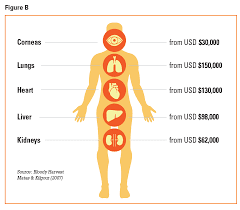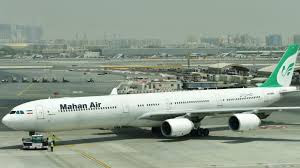Canada: A Crooked Cop, Drug Money and Diamonds: Action-Packed Allegations at Montreal Trial: Money Laundering Bankers in Panama; Colombian Cocaine War Lords: Russians & Lebanese Traffickers
FROM THE - JOURNALS of Monte Friesner ~ 
Financial Crime Consultant for WANTED SA Saturday March 26, 2011 >
THIS STORY WAS NINE YEARS IN THE MAKING AND IS FIT FOR A COMEDY & MOVIE WITH ALL THE CHARACTORS >
WANTED SA personnel have been following this story since 2002 in which are the Cambodian bankers and their monk. The Quebec mobster and his psychic; The crooked cop and a bunch of Colombian cocaine traffickers; Money Laundering bankers in Panama and lots more – perfect for B rated Movie.
Not to mention the axe murder, the Israeli diamonds and the Latvian bank accounts.
From Miami to Phnom Penh, this tale involves as much as $100-million in drug money, in one of the largest alleged schemes to hide proceeds of crime ever brought before the courts in Canada.
Sy Veng Chun, 63, and his wife Leng Ky Lech, 48, are charged with running what prosecutors call “a sophisticated money-laundering system” with a drug trafficker named Daniel Muir as one of their principal clients.
The Cambodian-born couple ran a tiny currency-exchange boutique in Montreal’s Chinatown, not two blocks from the courthouse where they now stand accused. 
From evidence at the Montreal trial, which began a year ago, and in other court cases in Florida, a fuller picture is emerging for the first time of an alleged intricate criminal web spanning three continents.
It started with Mr. Muir, a Quebecker whose rap sheet reads like a CV for a fast-rising drug importer, graduating from busts for a few grams of coke in 1988 to hundreds of kilos by the turn of the century. A thriving independent operator, he had a cordial relationship with Mafia bosses such as Frank Cotroni and was sanctioned by the organized crime groups in Montreal.
But with success came the problem of what to do with all those profits. According to Suzanne Pépin, a clairvoyant who became Mr. Muir’s confidante, “Daniel was fed up with hiding his money,” the Montreal trial was told.
Mr. Muir heard about the services offered by Mr. Chun and Ms. Lech, who ran two companies from the same Chinatown address called Peng Heng Or Gold Inc. and A&A Services Monétaires Inc., court heard.
The pair had been in the news before, when they were executives of Credit Bank of Cambodia of Phnom Penh. In 1995, they lost $2-million trading commodities futures and were unable to meet their margin call. Their bank defaulted, setting off a scandal in Cambodia.
In early 2000, at an Old Montreal restaurant, Mr. Muir and the two accused struck a deal, according to Ms. Pépin, who attended the supper. She said Mr. Chun was described as “the courier of money to Cambodia,” and Ms. Lech told Mr. Muir she had “other clients like him.”
(If Mr. Muir had his clairvoyant, Ms. Lech had her own spiritual adviser, a Buddhist monk, to see whether it was “a good thing” to take the trafficker’s money, the trial heard.)
By 2001, Mr. Muir and an underling, Bernard Mondou, started to negotiate with the Colombian drug baron Elias Cobos-Munoz to import a tonne of cocaine to Canada, via the Bahamas and Florida, according to U.S. court filings.
To pay for the drugs, Mr. Mondou turned to a childhood friend, Montreal police officer Pierre Goulet, to transport $3.5-million to Miami, according to a Quebec court ruling. Hiding packs of cash in the seats and doors of a car, Constable Goulet would flash his badge to avoid scrutiny at the Quebec-New York State border.
The initial plan was to bring the cocaine by plane. However, after the Sept. 11, 2001, attacks, the air route had to be dropped and they used instead a speedboat, court documents in Quebec and Florida say.
The U.S. Drug Enforcement Administration had gotten wind of the plot and intercepted the shipment in the Bahamas in January, 2002. The DEA then took the cocaine to Miami for a sting operation, according to DEA affidavits.
Days later, in the parking lot of a Taco Bell restaurant, Colombian traffickers brought a U-Haul truck to pick up the cocaine they would deliver to Mr. Muir’s men, unaware they were dealing with undercover DEA agents. Mr. Muir had to fly to Cuba to talk with his Colombian contacts about the lost cargo, not knowing that a police operation was being mounted against them, DEA affidavits said.
Back in Montreal, Mr. Muir kept on rolling.
His ex-wife testified that he told her he had “solved his money problems” when he entrusted about $100-million to Ms. Lech, “his partner for money.”
Ms. Lech came to Mr. Muir’s home to pick up boxes full of $20 bills, court heard. Mr. Chun and Ms. Lech moved the money overseas, prosecutors said, by wiring bank drafts to Cambodia and purchasing more than $10-million in diamonds in Israel, Belgium and Switzerland that were then sent to Hong Kong, Thailand and Cambodia.
“The purchase of this quantity is consistent with the use of diamonds to store wealth via proceeds of crime,” Corporal Kelly Ross, an RCMP expert, said in a statement filed before the court.
The cash was also funneled through Canadian financial institutions such as the Desjardins credit unions, the Bank of Montreal and the Bank of Nova Scotia, the trial heard.
In addition, prosecutors said, Ms. Lech used money “borrowed from her friend Daniel The Frenchman” to open a small bank in Phnom Penh, Peng Heng SME, which specialized in credit for small businesses.
In October, 2002, Mr. Chun and the Buddhist monk were at Montreal’s airport, about to fly to Cambodia, when agents doing a routine security check found $600,000 U.S. – in $100 bills – in Mr. Chun’s carry-on bag, court heard.
Even though no charges were filed, the RCMP seized the cash. 
Mr. Muir, meanwhile, was having trouble with the Colombians.
In 2003, he sent them $3-million through Panama. The Colombian shipped him 800 kilos of cocaine via Venezuela, but half was ruined in transit. Mr. Muir had to send emissaries to Miami to negotiate with the Colombians, who said he still owed them $1.7-million for the Venezuelan delivery, Florida court documents said.
In the fall, Mr. Muir sent $1-million to the Colombians, using a circuitous route that went from accounts in Latvia and Russia, through banks in New York and San Francisco to Costa Rica, according to a U.S. Justice Department indictment.
One evening in February, 2004, Mr. Muir was leaving the Club Wanda’s strip club in downtown Montreal when two men armed with an axe and knife ran after him. Witnesses heard him scream, “They’re going to kill me!” before he was hacked and stabbed. The murder has never been solved.
At the time, “investors” had paid Mr. Muir $35-million for more drugs, but the money was now missing, according to a U.S. Justice Department case summary.
Four months later, the DEA, the RCMP and police in the Bahamas and Colombia announced a series of charges against the Colombian and Canadian organizations. Mr. Mondou, Mr. Cobos-Munoz and Constable Goulet and dozens of others were all eventually convicted.
As police began digging into Mr. Muir’s background, the money trail led them to the Chun-Lech enterprise.
“We started making the links between the two organizations,” Sergeant Benoît Roy, the RCMP’s lead investigator on the case, said in an interview.
Police say they discovered that Mr. Muir’s $1.2-million mansion at the foot of Mont St. Hilaire, south of Montreal, was in Ms. Lech’s name. The hunt was on.
Mr. Chun and Ms. Lech were arrested in January, 2005, after returning from another trip to Cambodia. It took another five years of legal wrangling before their trial finally got under way.
WANTED SA kindly thanks The Globe & Mail, Westlaw, Arutz Sheva, Associated Press, and all the Parties, Press, Journalists, Law Enforcement and Securities forces who have contributed to this article and their sincere opinions and statements.
WANTED SA states that the facts and opinions stated in this article are those of the author and not those of WANTED SA. We do not warrant the accuracy of any of the facts and opinions stated in this article nor do we endorse them or accept any form of responsibility for the articles.








